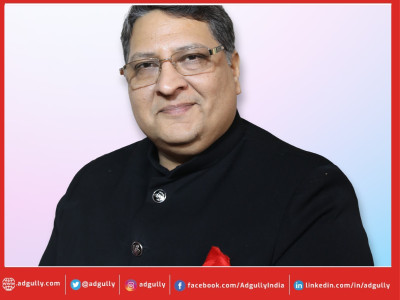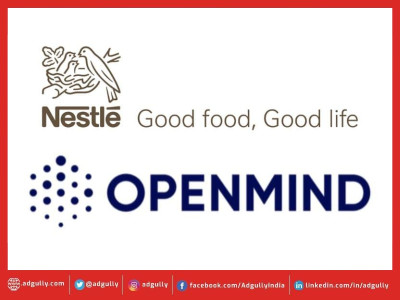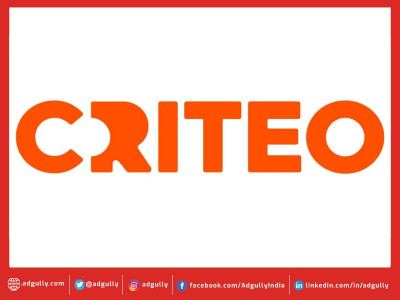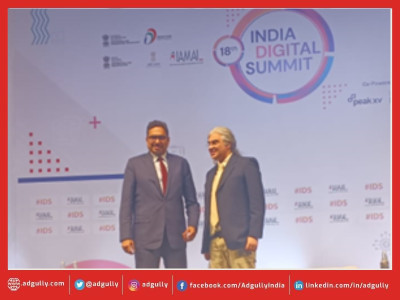OTT video growth pegged at 75% by 2021: MMA-GroupM report
India added 67 million mobile internet users in 2017, out of which 44 million were from Rural India. Rural India’s mobile internet users saw a 19 per cent YoY growth, almost triple the 6 per cent YOY growth Urban India. India will cross 500 million mobile internet users by the end of 2018, led by the rural populace.
This was revealed in ‘Mobile Ecosystem and ad-Sizing Report’ 2018, launched by Mobile MarketingAssociation along with GroupM.
According to the report, the combined reach of OTT audio and video is more than 200 million users in India. Video takes the largest share of the pie of content consumed on mobile internet, projecting a growth from 49 per cent in 2016 to 75 per cent in 2021. OTT players are creating original content and also including international content, which is helping them gain newer audiences and increase view time. Additionally, Indian YouTubers are creating great content that has also increased video viewing in India. Growing time spent on these platforms has also led to more advertising inventory. This also makes ads on video platforms more receptive due to its good content value. The OTT market will keep on growing as good content and good vernacular content is created for audiences from all regions.
India saw the launch of seven big OTT platforms in the last 2 years – namely, Netflix, Amazon Prime, Hotstar, Voot, ZEE5, Sony Liv and Wynk. With the growing OTT consumption and the need of vernacular content, the report forecasts that in the next 5 years, vernacular content users will grow 12x, compared to 2x growth for English content consumers.
The report further states that in the next 5 years, chat application, Government sites and digital payments will lead to more vernacular content consumers online. The Indian language internet users have grown from 42 million in 2011 to 234 million in 2016, a 4x growth, almost double from the 2x growth seen in the English language internet users. This has happened due to major online platforms like e-commerce and social media platforms launching their content in vernacular languages, reaching out to a much bigger and diverse Indian audience. It is anticipated that vernacular language users will increase 12 folds by 2021 and this will only be possible if OEMs create keyboards that are available in all languages, as currently 70 per cent of vernacular content consumers find it tough to work with an English keyboard on their mobile device.
The report acknowledges the role of Reliance Jio in changing the telecom ecosystem in India by adding 200+ million new mobile subscribers, shaping it’s vision of ‘Internet for Every Indian’.
The highlights of the report:
Reach of mobile among consumers in India
- The mammoth growth of Jio:
- Reliance Jio is now 18 per cent of the total market, within 1.5-2 years of its launch; adding 200 million+ users to the mobile ecosystem
- Rural India enabling mobile internet growth in India, adding 100 million mobile internet users since 2015
- OTT apps surge made Entertainment the activity where people spend most of their mobile data on
- 4G data usage grew 144 per cent in 2017. Further analysis points that Jio added 26 per cent rural subscribers using 4G, incumbents added 53 per cent of their 4G subscribers to the rural market
Mobile handset ecosystem in India
- 4G feature phone gives new lease of life to feature phone; may well be another year before smartphones take over feature phones in India. Jio and Micromax being the front-runners in the 4G feature phone space
- Xiaomi becomes the most shipped smartphone, the first time any smartphone crossed Samsung in the last 5 years
- Chinese manufacturers are making the big buck from India and Indian manufacturers are struggling
Basics of programmatic advertising
- Programmatic adoption in India is growing, it stands at 32 per cent right now and is poised to grow to 52 per cent in the next 24 months
- India is in the top 3 countries in programmatic spends growth, in the past year the spends grew 81 per cent
- The propensity for programmatic guaranteed increasing in India; penetration to grow from 6 to 17 per cent by 2020
Key verticals driving mobile advertising
The key verticals driving the mobile advertising are gaming, vernacular, OTT video and OTT audio:
Gaming
Mobile gaming in India is dominated by freemium games. 2016 saw a 200 per cent increase in gaming app revenue, which will grow at a CAGR of 87 per cent till 2020, crossing the $1 billion mark
In India, 9 out of 10 people have games on their phone. 26 per cent of Indian gamers are women
Vernacular
Vernacular language users in India will grow 12x by 2021 compared to English with 2x growth
Social media and digital news helped the vernacular growth in India in 2017. The future torchbearers if this growth by 2021 will be e-tailing and digital classifieds
OTT Video
On-demand video platforms cross 100 million+ users in India with Hotstar leading the pack
Vernacular content consumption is huge on OTT platforms, as Tier 2 and 3 cities drive the maximum user growth. Mobile is the new primetime, as people who don’t watch TV catch their favourite genres of entertainment on their mobile devices, especially sports
OTT Audio
OTT music contains 72 per cent revenues of the overall Indian music industry. There is increasing competition and launch of several new players in this space in the last 2 years, with a focus on exclusive content/ originals in the audio space.
Rohit Dadwal, Managing Director, MMA Asia Pacific, remarked, “Mobile Marketing is now a main stream advertising and marketing medium and it is imperative that we start to decipher the various parts of this burgeoning media. We hope the ecosystem study would provide insights to marketers and the industry on the whole on the opportunity and will help in making the right investments for its continuing growth.”
Sam Singh, the co-chair of Mobile Marketing Association India and CEO GroupM, noted, “The number of smartphone users is expected to only go up and it just shows how much potential these digital screens have. Hence, we as marketers must understand various facets of mobile marketing. Times are changing fast and we want to enable marketers with the knowledge that can help them in the long run.”
















Share
Facebook
YouTube
Tweet
Twitter
LinkedIn